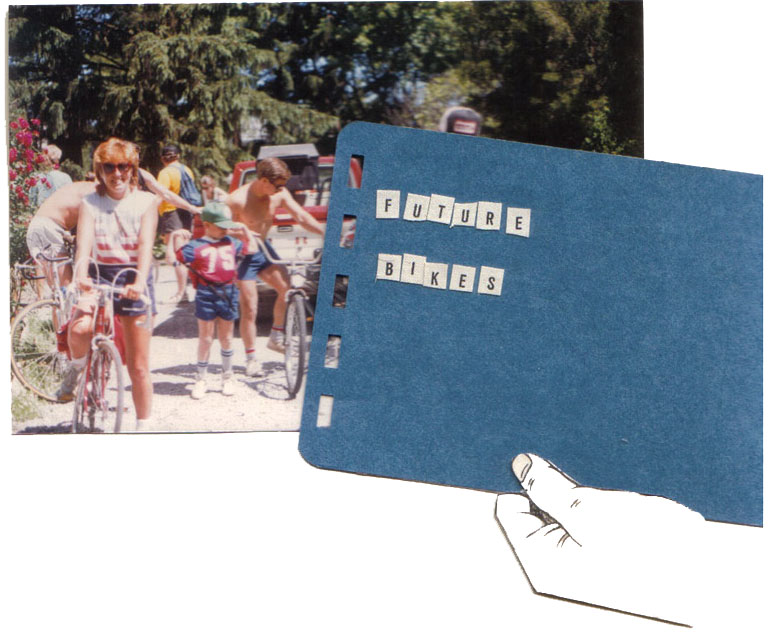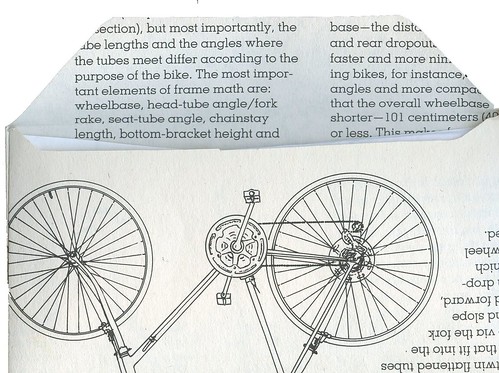Sunday, December 7, 2008
The bicycle of today is “the simplest, quietest, most efficient, and least lethal of modern vehicles,” (Whit - Wilson, 2). With the materials and resources that it takes to, “produce a single midsize car...one hundred bicycles could be produced,” (Bourseiller 152). The bicycle produces neither greenhouse gases nor pollution. Bicycle use contributes to, “...improving urban air quality, supporting a sustainable means of transport, and reducing your carbon footprint,” (Bourseiller 152). However, even though they are a fast, efficient, and healthful means of transport, they do not seem particularly welcome in most cities around the world. Making a municipality bicycle-friendly means, “...laying out bike lanes, providing secure bike stands, and dealing with hazards ranging from dirty gutters to abusive car drivers,” (Steffen 253). Most industrialized cities: “...have been laid out on the assumption that everyone will get around by automobile...non-drivers often feel stranded, and hapless pedestrians and bicyclists are forced to negotiate the desolate fringes of roaring highways around suburban pods and commercial strips... Even, in poor countries, auto-oriented development is surprisingly common, although car ownership is a limited to a minority,” (Ladd 121). With this is in mind, several cyclist advocacy groups around the world (Critical Mass, Bicitekas, Ghost Bikes) stage, "...defiant, traffic stopping protests to boost motorist awareness and change the general public perception of biking... and focus on bicyclists' rights," (267 Steffen), with the ultimate goal of raising awareness to lessen our dependence on high-energy-consumption transportation. It is for this reason that I have chosen the concept of the bicycle (or man-powered transportation) as a plateau for discussion. The bicycle is already a loaded symbol that will appeal to a vast range of people. Future Bikes continues this history of bicycle activism and advocacy, but places it in the realm of the collaborative public art project by offering the experience of an immersive large scale narrative to generate awareness and discussion of these pressing issues.
Future Bikes is informed by theories of relational art events, that enable and engage cultural dialogue with the public. In the tradition of participatory art, the goal of this collaboration will allow the individuals involved to reflect on the immediate issues the event raises, while also creating a conscious collaboration as the artwork itself. The production of the art in Future Bikes must be seen from the standpoint of "...a multiplicity of social components and institutions, whereby the work itself or the artists are only one component out of many," (Weibel 182). Future Bikes, will not "...appear as the product of a single person, but rather as the result of a collective consensus," (Weibel 182). I predict that Future Bikes will successfully engage participants (artists and public alike), in the experience of looking, creating, and performing art because it will take place in an environment that is exciting, unpretentious, and consuming.
The project encompasses a six month period where individuals who identify themselves as artists as well as the general public, will collaborate through a variety of disciplines to create and design bicycles that could theoretically withstand the hazards of a forthcoming environmental disaster or a nuclear holocaust. The project will culminate, throughout one day, with a group of bicyclists on board the newly transformed bikes. This is the epicenter of the project. A veritable game/theater/spectacle, “spontaneous in its appearance, but carefully organized nonetheless,” (Vari 385). A transgressive, temporary event, in the tradition of Flash Mobs and bicycle activism. These riders will cruise through Toronto following a set route, or “sequential path,” (Maiki 125), forming a “mobile collective,” (Ladley - Beesley 190). This mobile collective will eventually reach its specific destination: a gallery, or alternative space. The space will feature an installation where documentation, artwork inspired by the concept, and the bikes which have been customized for the event (the Future Bikes), will be available for commercial sale. The space will also serve as a destination for a party or celebration of sorts that is open to the public. It will last for a number of hours and it will consist of: DJs, musical acts, as well as performing work that is inspired by, or relates to, the overarching themes of Future Bikes. Those who attend the event, and participate in the mobile collective, will be given a document that is part graphic novel, emergency pamphlet, and artist statement. The distribution of this document, as well as the commercial sale of documentation, research, and the actual bikes involved, is proposed as a means of disintegrating the project to even more directions and places. It will also serve to give participants even more of an immersive experience.
If you have any questions concerning my curatorial mandate or wish to get involved in the Future Bikes project, please e-mail: thefuturebikes@gmail.com
More information will be made available in the coming weeks so keep checking this blog to stay updated.
Leveson Cocarell,
Curator
December 7, 2008















